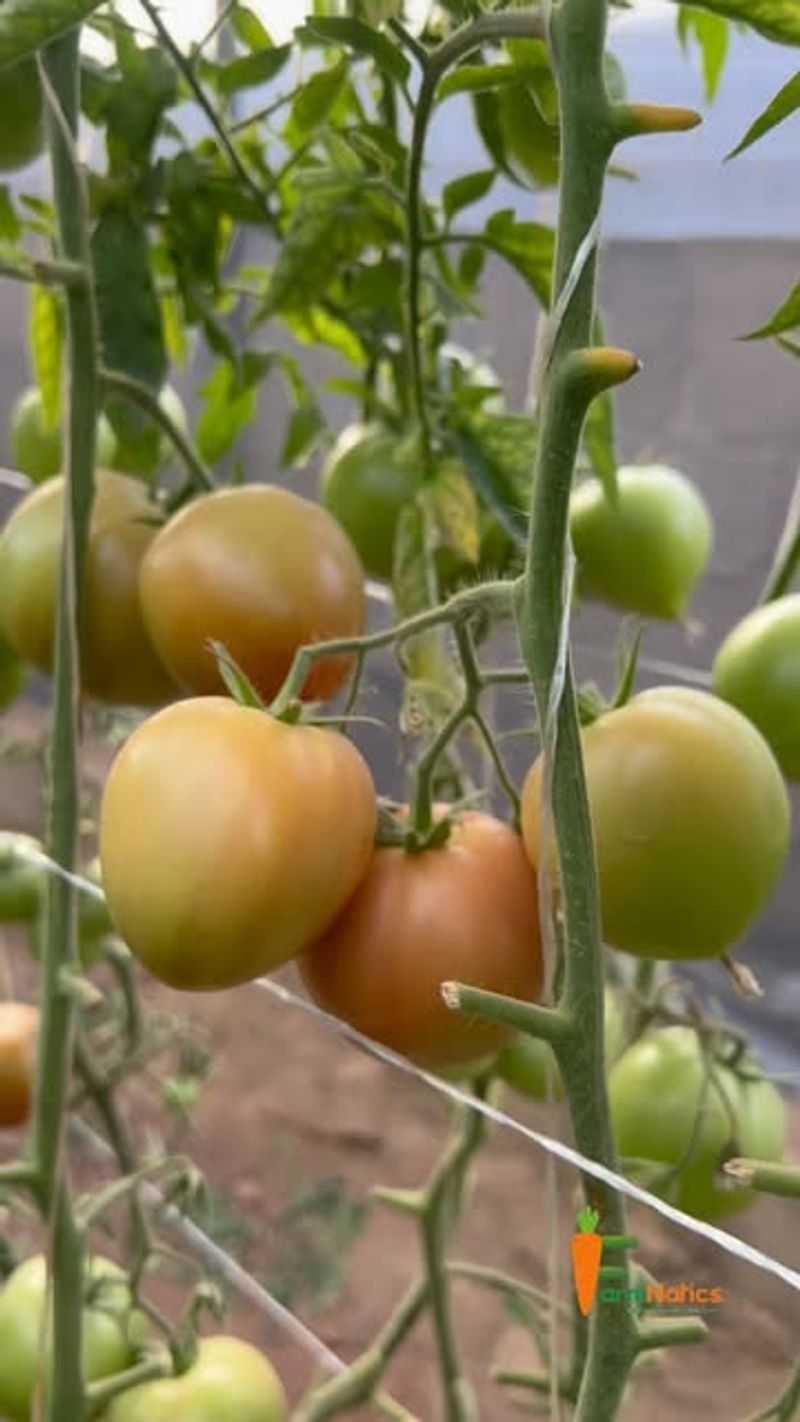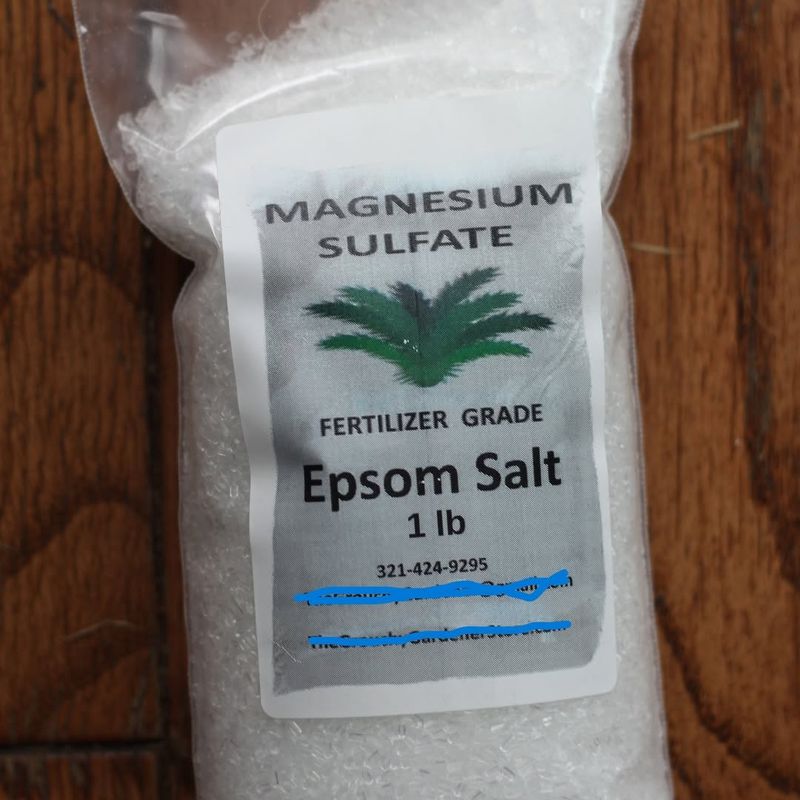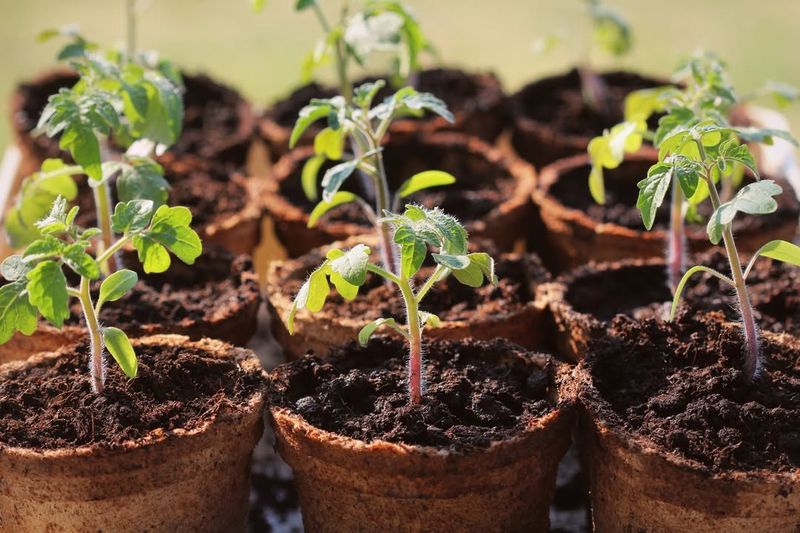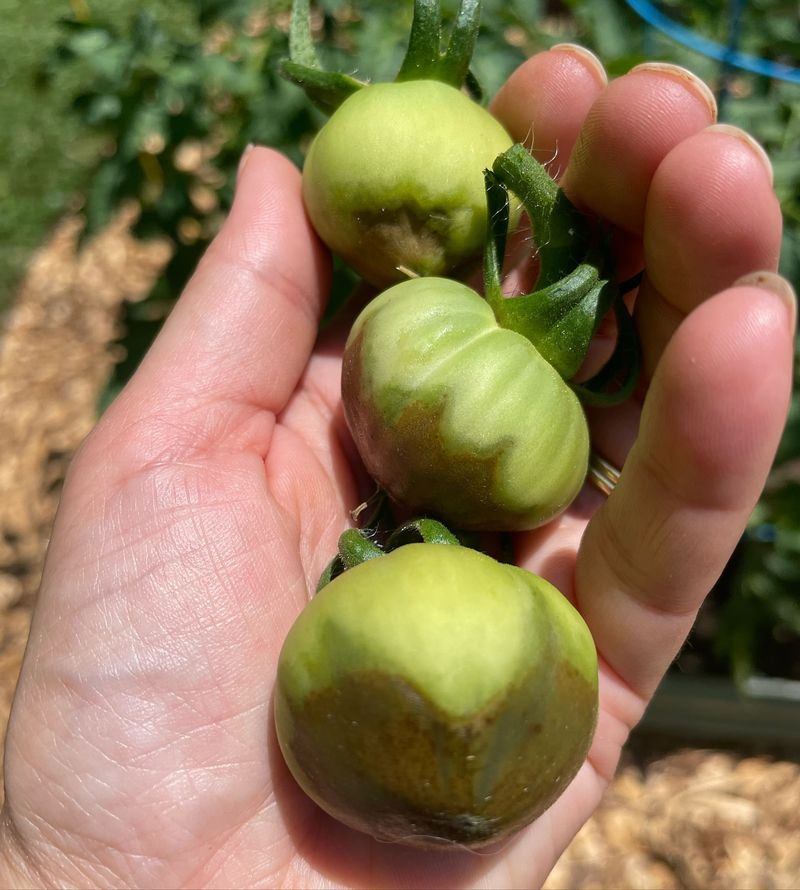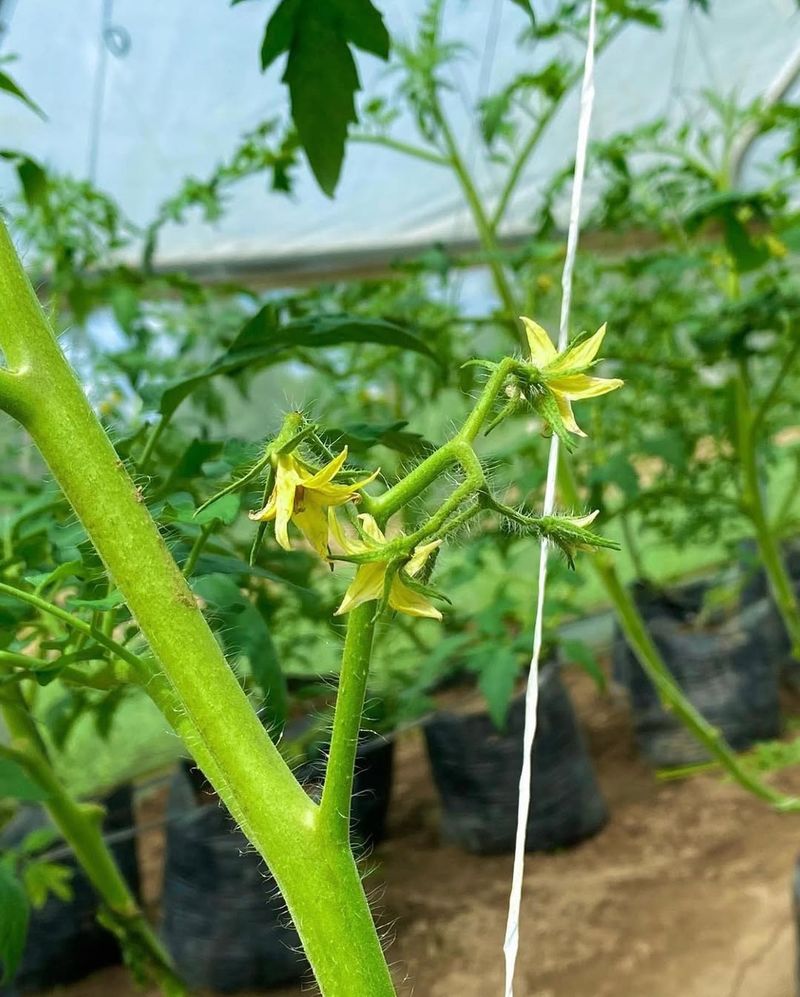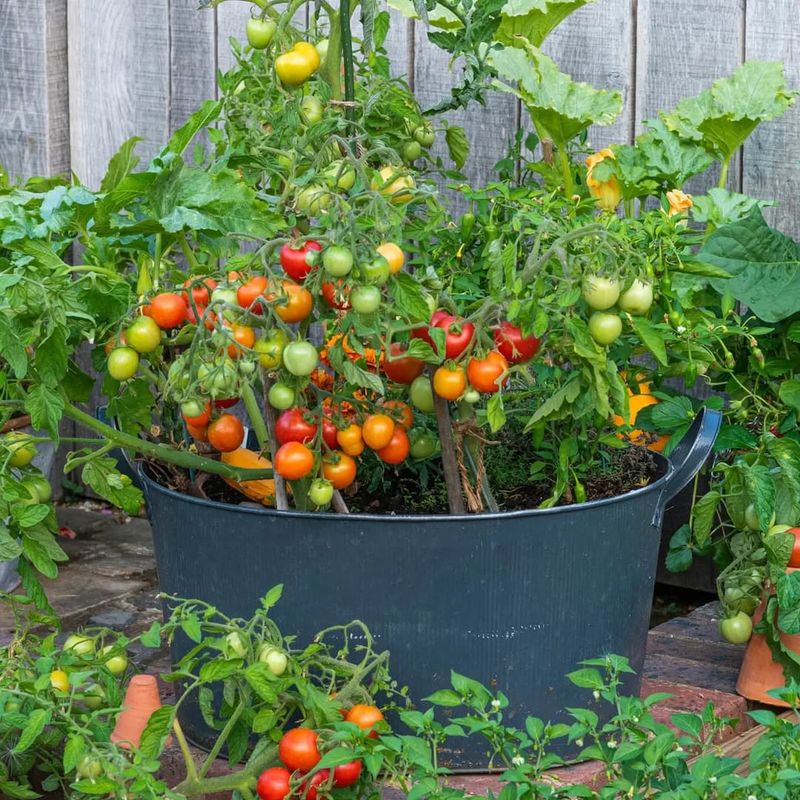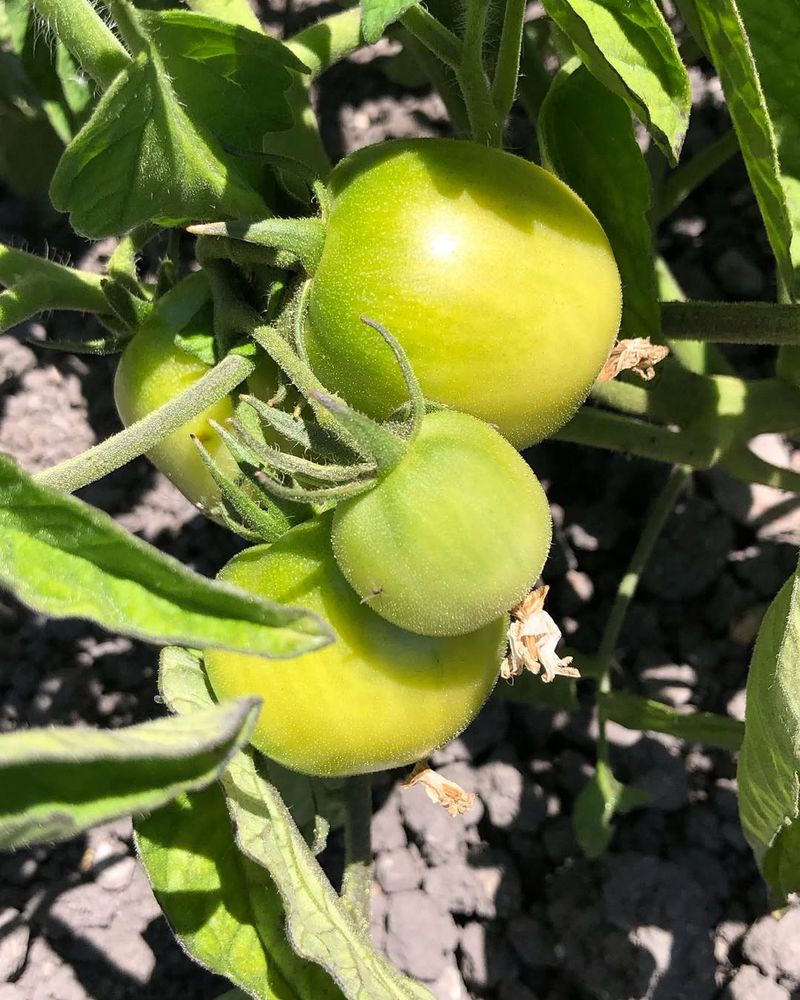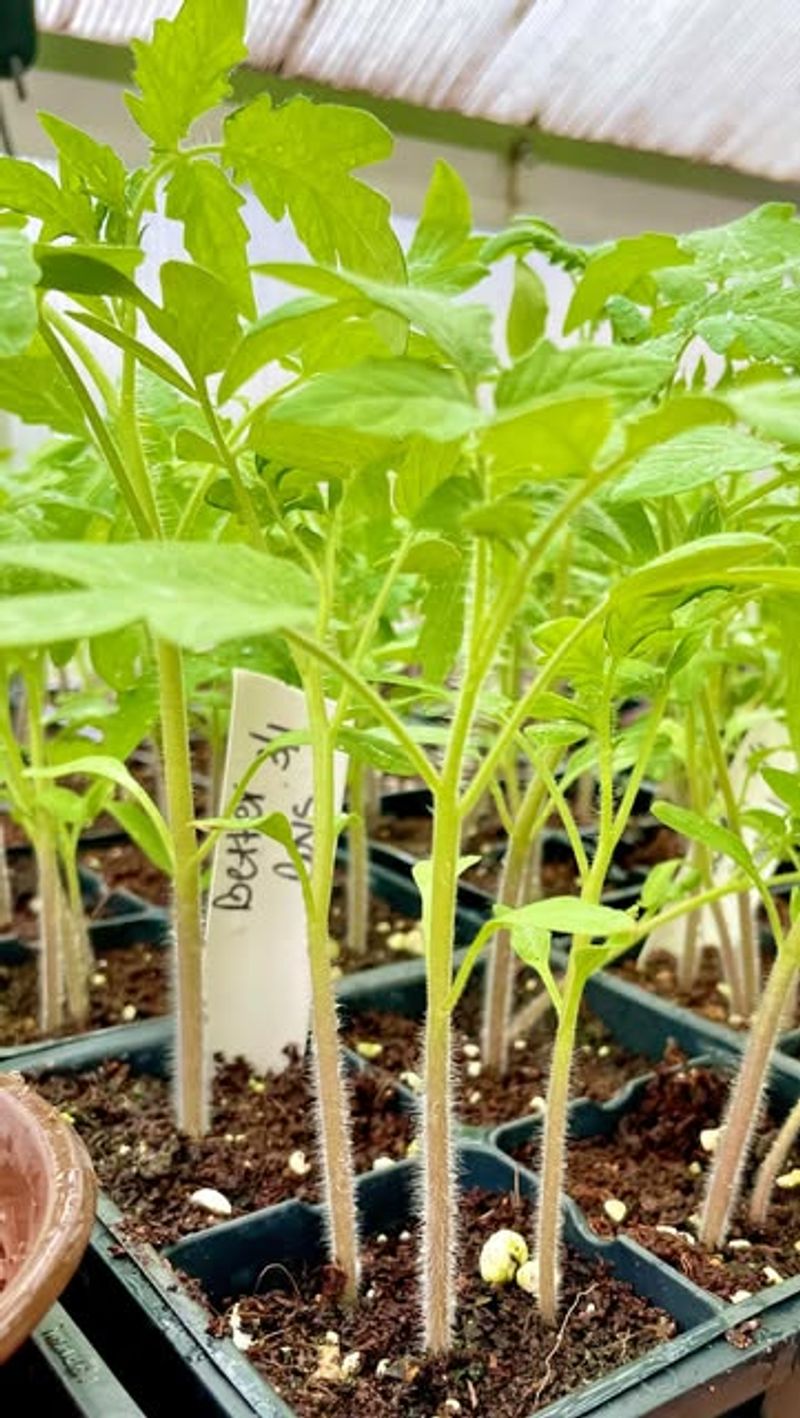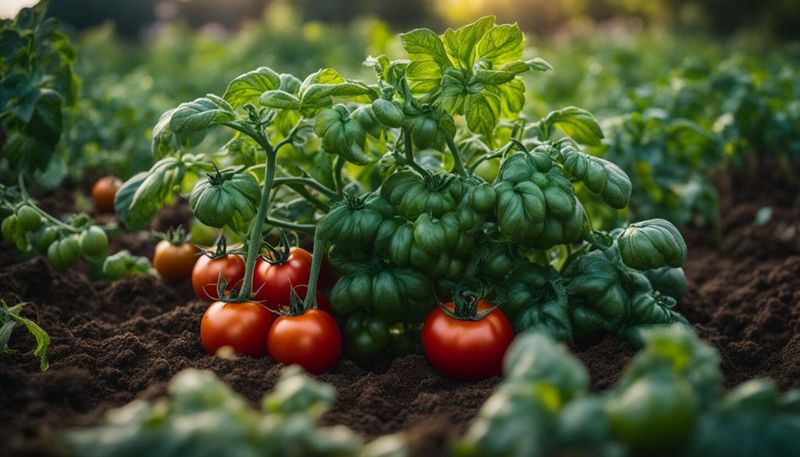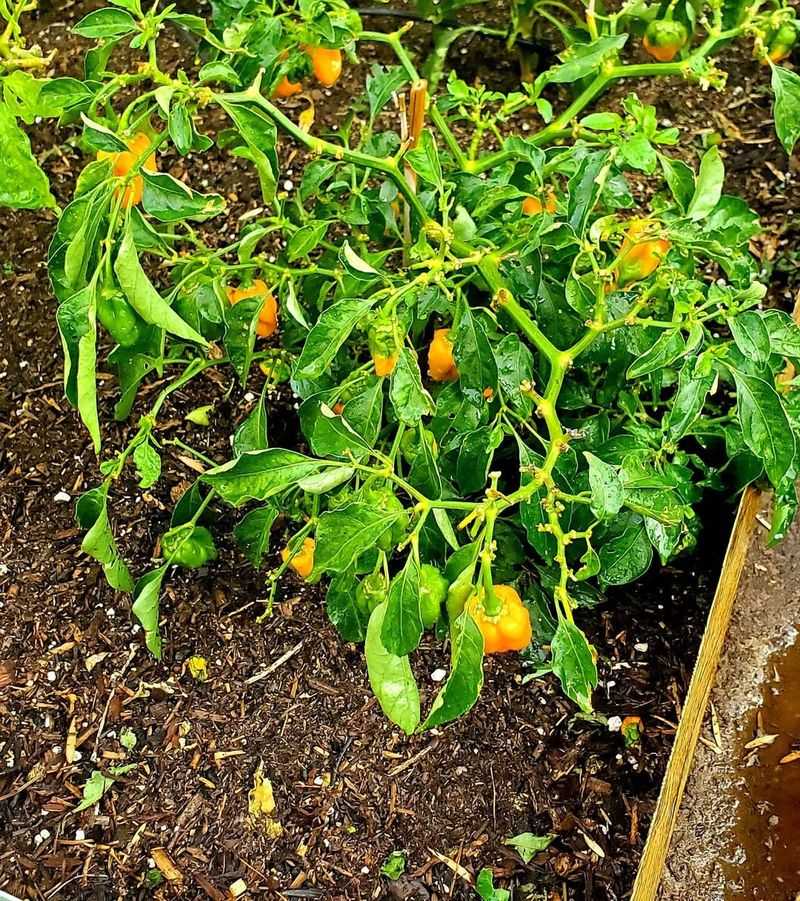Epsom salt is one of those garden remedies that gets a lot of buzz—especially when it comes to growing juicy, vibrant tomatoes. Some swear by it as a miracle booster for everything from greener leaves to bigger fruit. But here’s the thing: while Epsom salt can help your tomatoes thrive, using it the wrong way might do more harm than good. The secret? Knowing exactly when to use it—and when to leave it on the shelf. Here are 8 smart, tomato-friendly ways to use Epsom salt in your garden, along with 7 common mistakes that could cost you your harvest.
1. When Leaves Show Magnesium Deficiency
Ever noticed the leaves looking a bit under the weather? Those yellow veins on the lush green might signal a need for magnesium. Epsom salts, rich in magnesium, can rejuvenate those leaves like a splash of sunshine after rain.
Sprinkle some around the plant’s base and water deeply. The transformation can be magical. But remember, moderation is key. A little boost now and then can work wonders, but don’t overdo it. Keep an eye on those leaves and let them tell you when they’re content!
2. When Soil Tests Confirm Low Magnesium
Testing the soil can reveal hidden secrets beneath the surface. Sometimes, it’s just missing that touch of magnesium. Adding Epsom salts can fill that void beautifully.
When the test results are in, and magnesium’s the missing friend, a gentle sprinkle of Epsom salts can make your tomatoes sing. You’ll see them growing strong and vibrant. Just be cautious and follow the test recommendations. It’s all about balance and harmony in the garden. Watch them joyfully respond!
3. During Early Growth (Sparingly)
Those tiny seedlings represent hope and new beginnings. A touch of Epsom salts can give them a gentle nudge. During the early growth phase, a light sprinkle can support their journey.
However, it’s crucial not to overwhelm them. Too much can be like an overbearing friend. Just a small amount, sparingly used, can help them grow strong roots without causing stress. Remember, it’s the start of a journey, so treat them with care.
4. For Blossom-End Rot (As A Supplement Only)
Blossom-end rot can be a heartbreaker. Those black spots can ruin a tomato’s beauty. Epsom salts might help as a part of the solution, but they’re not a cure-all.
Use them as a supplement, combined with other calcium-rich strategies. It’s a team effort to combat this nuisance. With care and the right balance, you’ll see them flourish again. Let the tomatoes be the stars of the show and watch them shine!
5. To Improve Flowering And Fruit Set (In Moderation)
Flowers and fruits are the garden’s applause. If they’re not showing up, Epsom salts might be the encouragement they need. Use them moderately to enhance the blooms and set the stage for fruiting.
The visual delight of flowers turning into juicy tomatoes is a gardener’s dream. But moderation is the mantra here. Give them just enough to thrive without overwhelming. Watch the blooms transform into a bountiful harvest.
6. For Container-Grown Tomatoes
In the cozy confines of a container, tomatoes have their own charm. Epsom salts can be their ally, providing essential nutrients that might be missing.
These confined spaces need extra love, and Epsom salts can offer just that, ensuring they grow robust and healthy. It’s a gentle touch that makes a big difference. Treat them to this special care, and they’ll reward you with luscious fruits.
7. When Lower Leaves Curl Or Drop Prematurely
Leaf curl can be a subtle cry for help. Those lower leaves might need a little magnesium boost to stand tall again. Sprinkling Epsom salts can be the gentle hug they need.
Give them support, and you’ll see them uncurl and flourish once more. It’s like giving them a second chance to thrive. Listen to their silent whispers and respond with care, keeping the garden vibrant and lively.
8. To Green Up Faded Foliage
When the greenery fades, it’s like a dimming light. Epsom salts can brighten things up, restoring the vibrant green that signifies health and vitality.
Sprinkle a bit around and watch the transformation. It’s like turning back time for those weary leaves. They’ll shine with renewed life, adding beauty to your garden. It’s a simple act with stunning results, breathing new life into your plants.
9. Don’t Use Epsom Salt Without Doing A Soil Test
Sometimes, you just have to trust your instincts. If a soil test hasn’t been done, Epsom salts can be a cautious choice to experiment with.
Without overdoing it, give it a try and observe. It’s a bit of a gamble, but it might be just what your plants need. Watch their reaction and let them guide you. It’s all about learning and growing together, one step at a time.
10. Avoid Using Epsom Salt If Your Soil Already Has Enough Magnesium
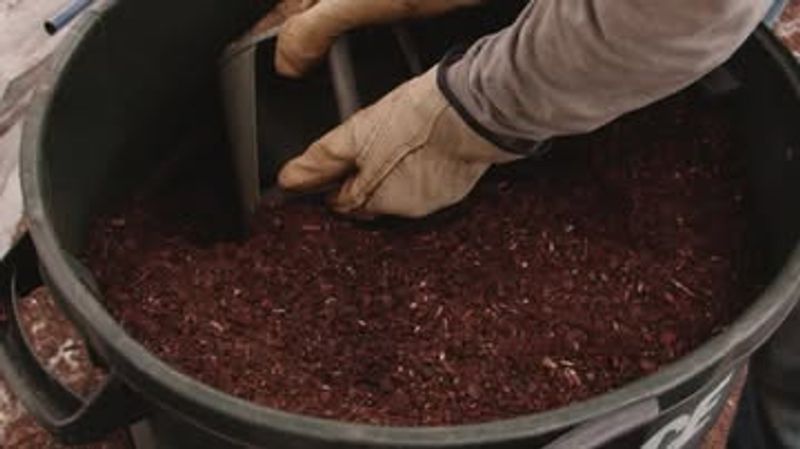
Sometimes, less is more. If your soil is already rich in magnesium, then Epsom salts might be unnecessary. Overuse can lead to imbalance, like too much of a good thing.
Appreciate the natural richness and let the soil work its magic. Trust in what you have, and let the plants savor the natural nutrients. It’s a delicate dance of balance and harmony, celebrating nature’s bounty without interference.
11. Don’t Rely On Epsom Salt As A Cure-All For Blossom-End Rot
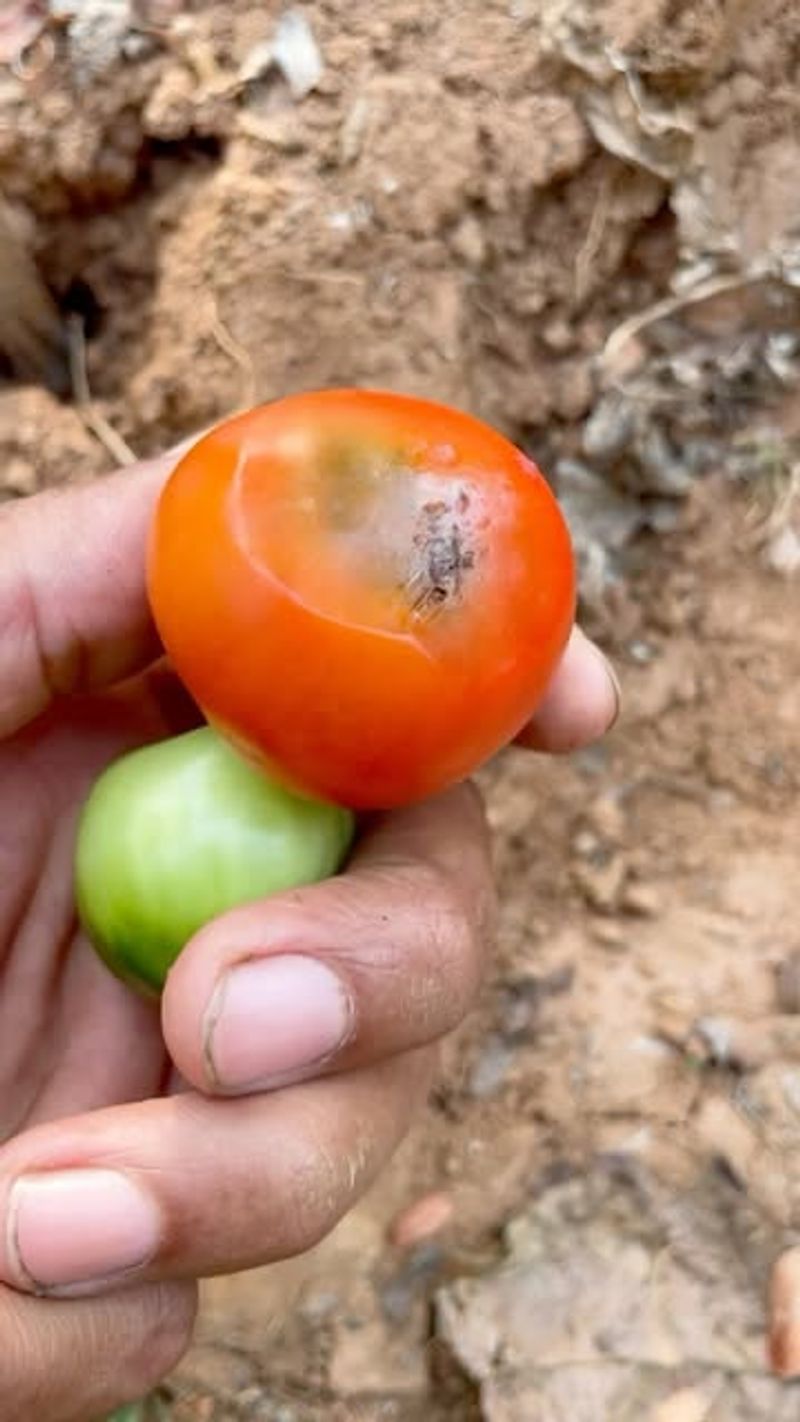
Blossom-end rot can be a deceiver, but Epsom salts aren’t a magic cure-all. Over-reliance can lead to disappointment. They should be part of a broader strategy.
Calcium is often what’s missing, and while Epsom salts can support, they can’t do it alone. It’s about understanding the bigger picture and addressing the root causes. Know the limits and work with nature, not against it.
12. Don’t Apply Epsom Salt Heavily On Young Seedlings
Young ones need care, not an overload. Overusing Epsom salts on seedlings can hinder rather than help. It’s like giving them too much too soon.
They need nurturing, not overwhelming. A light touch goes a long way. Excess can stunt growth, so handle with care. Feel their pulse and respond gently, allowing them to grow strong and true.
13. Avoid Using Epsom Salt As A Regular Weekly Treatment
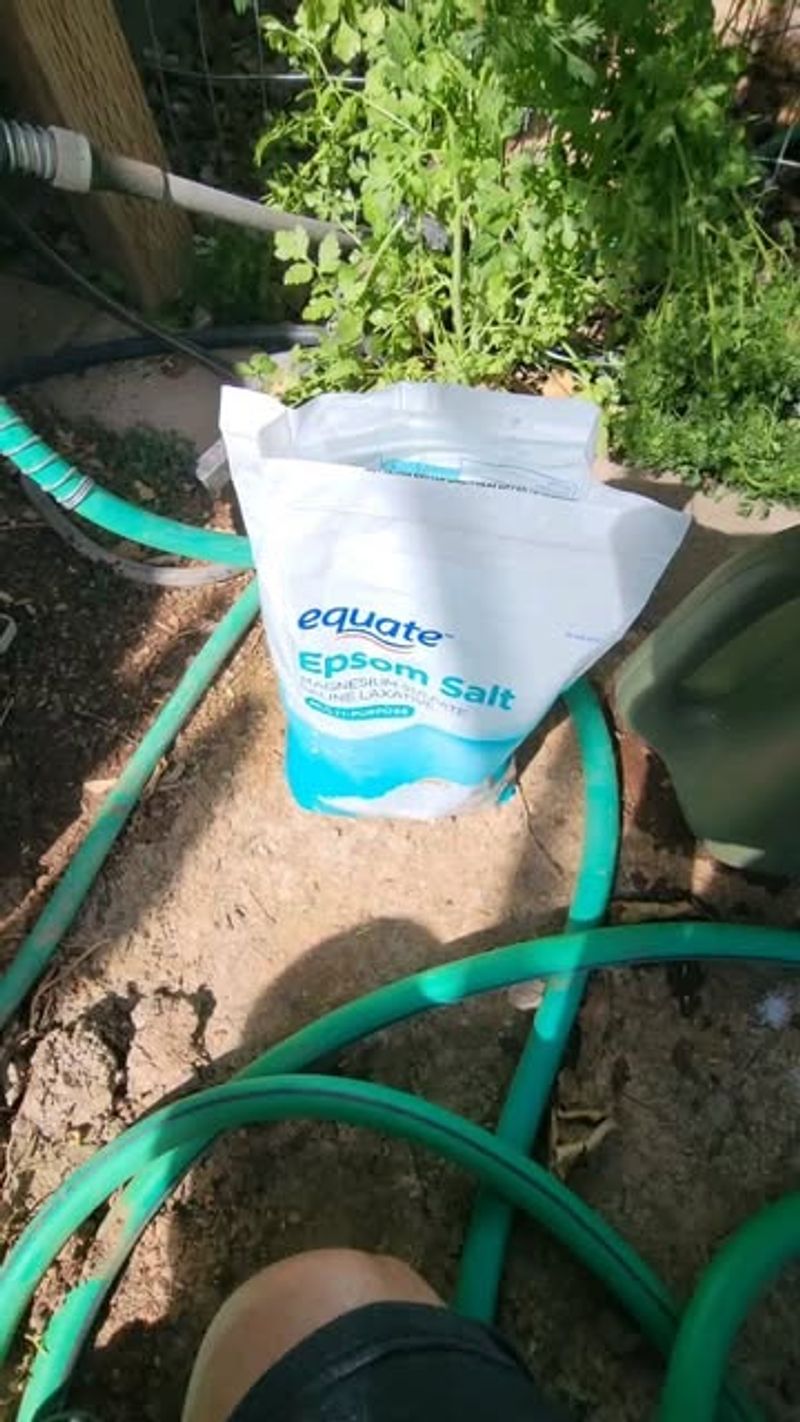
Routine can be comforting, but not always wise. Using Epsom salts weekly might sound good, but balance is crucial. Plants thrive on diversity, not monotony.
Overuse can lead to imbalance. Instead, respond to their needs, not a schedule. Let intuition guide you, and you’ll find the right rhythm. Embrace the unpredictability of gardening. Flexibility fosters growth.
14. Don’t Use Epsom Salt In Clay Or Heavily Amended Soils
Clay soils have their own story, often heavy and compact. Epsom salts can help, but they need a gentle approach.
In such soils, less is more. It’s about finding the right touch to enrich without overpowering. Let the soil breathe and support it with care. Understand its nature, and you’ll see your plants flourish against the odds.
15. Don’t Add Epsom Salt Without Balancing Other Nutrients
Balance is an art. Epsom salts can’t stand alone. They need to be part of a balanced nutritional plan.
Ignoring other nutrients can lead to imbalance. It’s a symphony where every element plays a part. Integrate thoughtfully, and you’ll nurture a thriving garden. Understand the synergy of nutrients, and let them work together in harmony.


